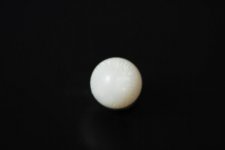Caitlin
Well-known member
Posting on behalf of Tom:
This article appeared in a learned scientific journal yesterday. The mention of pearl structure is in the mid-portion and explains the characteristics of pearls at the level below discussions of conchiolin and aragonite, etc. It seems appropriate for a pearl experts' website, and if you agree, please post.
Tom
http://arstechnica.com/journals/sci...olloidal-crystals-make-better-neural-networkshttp://arstechnica.com/journals/sci...olloidal-crystals-make-better-neural-networkshttp://arstechnica.com/journals/sci...olloidal-crystals-make-better-neural-networkshttp://arstechnica.com/journals/sci...olloidal-crystals-make-better-neural-networksColloidal crystals make better neural networkshttp://arstechnica.com/journals/sci...olloidal-crystals-make-better-neural-networkshttp://arstechnica.com/journals/sci...olloidal-crystals-make-better-neural-networkshttp://arstechnica.com/journals/sci...olloidal-crystals-make-better-neural-networkshttp://arstechnica.com/journals/sci...olloidal-crystals-make-better-neural-networkshttp://arstechnica.com/journals/sci...olloidal-crystals-make-better-neural-networkshttp://arstechnica.com/journals/sci...olloidal-crystals-make-better-neural-networks
By Adam Stevensonhttp://arstechnica.com/journals/sci...olloidal-crystals-make-better-neural-networkshttp://arstechnica.com/journals/sci...olloidal-crystals-make-better-neural-networkshttp://arstechnica.com/journals/sci...olloidal-crystals-make-better-neural-networkshttp://arstechnica.com/journals/sci...olloidal-crystals-make-better-neural-networks | Published: July 28, 2008 - 01:37PM CT
In order to understand the human nervous system, it is essential to understand the growth and structure of three-dimensional neural networks. However, most neural network studies have been limited to two dimensions or unrealistic representations in three dimensions. In a recent Nature Methods article, researchers from University of California Berkeley and Lawrence Berkeley National Lab demonstrate a method for producing three-dimensional neural networks based on templates made with colloidal crystals.
A colloidal crystalhttp://arstechnica.com/journals/sci...olloidal-crystals-make-better-neural-networkshttp://arstechnica.com/journals/sci...olloidal-crystals-make-better-neural-networkshttp://arstechnica.com/journals/sci...olloidal-crystals-make-better-neural-networkshttp://arstechnica.com/journals/sci...olloidal-crystals-make-better-neural-networks is a highly ordered array of particles with diameters between 10 nanometers and 100 micrometers. It has been shown that particle packing and crystal structurehttp://arstechnica.com/journals/sci...olloidal-crystals-make-better-neural-networkshttp://arstechnica.com/journals/sci...olloidal-crystals-make-better-neural-networkshttp://arstechnica.com/journals/sci...olloidal-crystals-make-better-neural-networkshttp://arstechnica.com/journals/sci...olloidal-crystals-make-better-neural-networks in these substances is tightly controlled by particle size, chemistry, and shape. Over the past decade, colloidal crystalshttp://arstechnica.com/journals/sci...olloidal-crystals-make-better-neural-networkshttp://arstechnica.com/journals/sci...olloidal-crystals-make-better-neural-networkshttp://arstechnica.com/journals/sci...olloidal-crystals-make-better-neural-networkshttp://arstechnica.com/journals/sci...olloidal-crystals-make-better-neural-networks have been heavily studied because their unique optical properties allow them to behave as waveguides and may enable optical computing devices. A common example of natural colloidal crystals is a pearl—pearls get their unique appearance from their underlying colloidal crystalline structure.
In this paper, the authors coated colloidal borosilicate spheres with poly(L-liysine) to promote cell adhesion and then attached rat hippocampal neuron cultures to the spheres. The glass spheres were then placed on top of two dimensional neural network samples obtained from embryonic rats. After three weeks of culturing , the result was a three-dimensional neural network with a realistic neuron density. The authors also found that they could influence and guide network formation by incorporating defects such as larger spheres into the colloidal crystal.
To study the networks, the nerve cells were stained with fluorescent photoswitching compounds and imaged with confocal fluorescence microscopy. This resulted in stunningly detailed images of three dimensional neural networks that allowed the authors to selectively stimulate neurons and record neural activity throughout the network. In this way, the researchers were able to determine connectivity between various layers of the colloidal crystal and study how this connectivity is controlled by factors such as chemistry and electrical history.
Given the chemical and morphological flexibility of colloidal crystals, this work should enable a host of future experiments in neural networks that range from studies of network formation and connectivity to neuron-targeting medications. An enhanced understanding of three-dimensional neural networks could also have implications for future computer processor architectures, network protocols, and other information technology applications.
Nature Methods DOI: 10.1038/nmeth1236 http://arstechnica.com/journals/sci...olloidal-crystals-make-better-neural-networkshttp://arstechnica.com/journals/sci...olloidal-crystals-make-better-neural-networkshttp://arstechnica.com/journals/sci...olloidal-crystals-make-better-neural-networkshttp://arstechnica.com/journals/sci...olloidal-crystals-make-better-neural-networks
Last edited:

